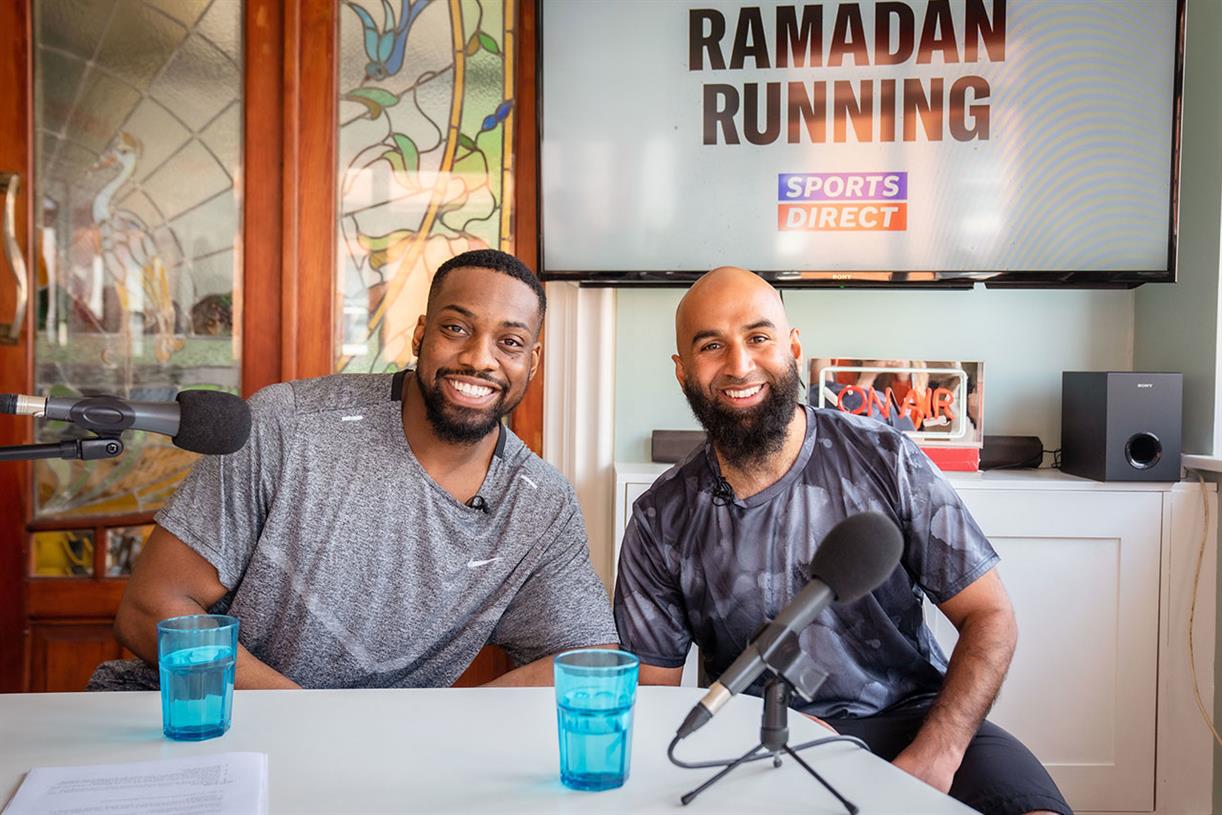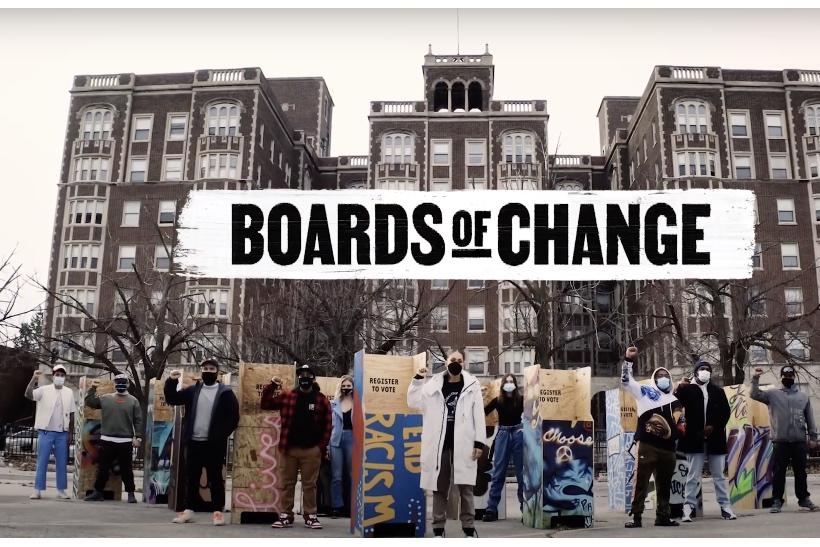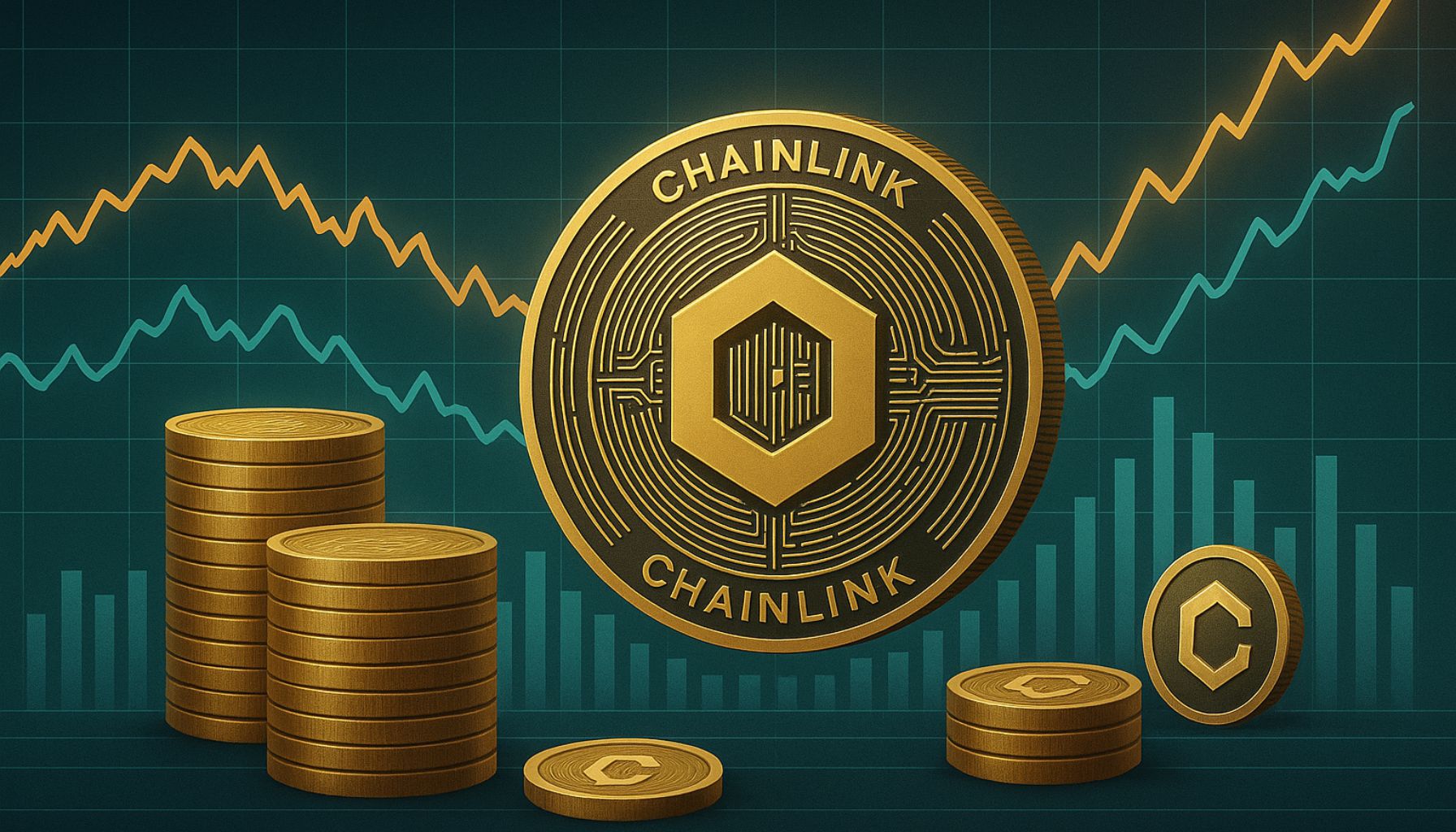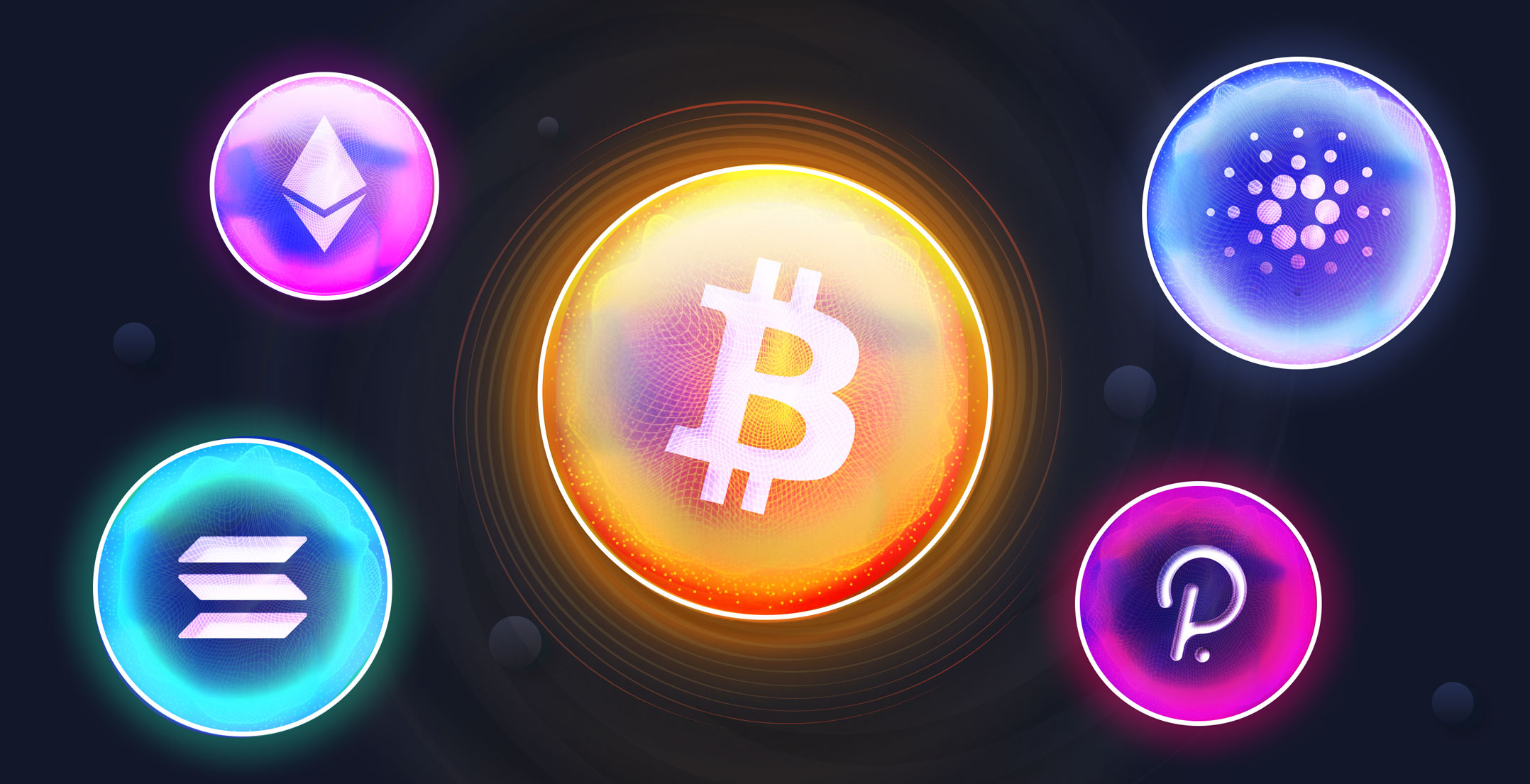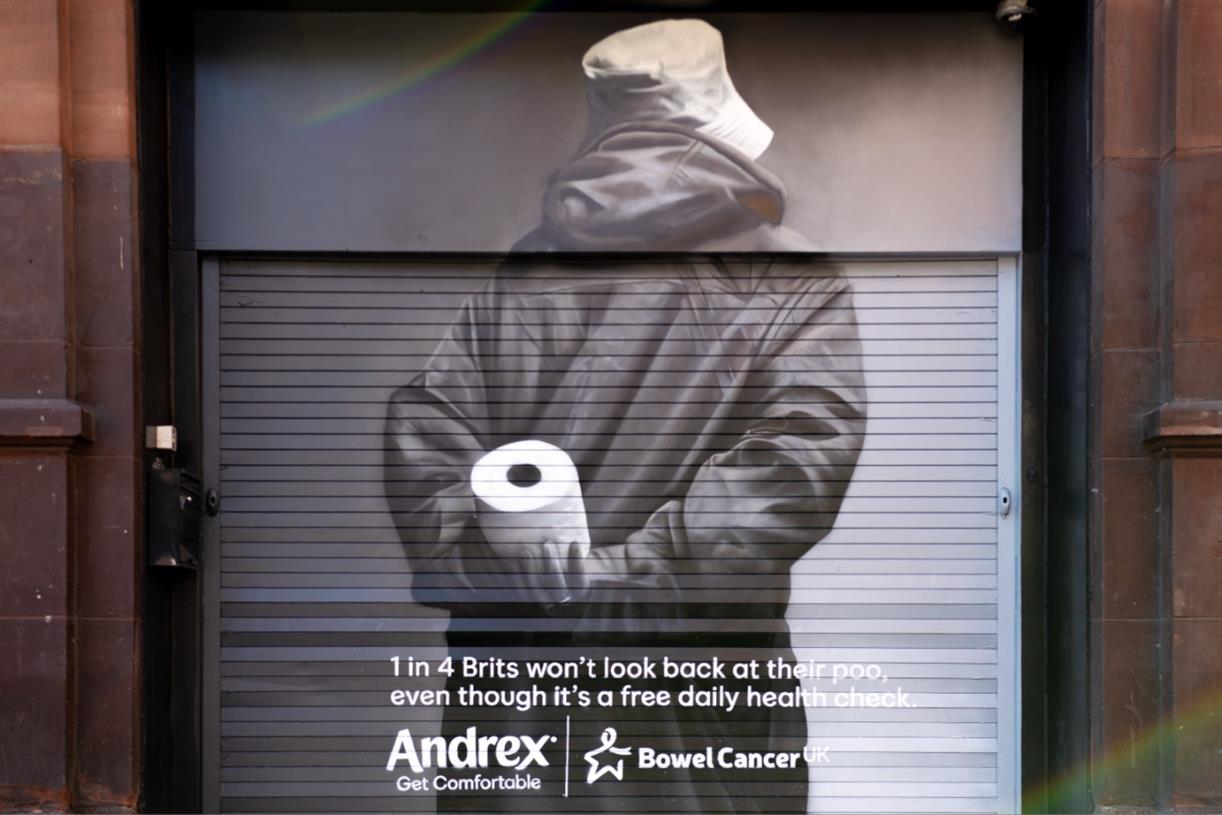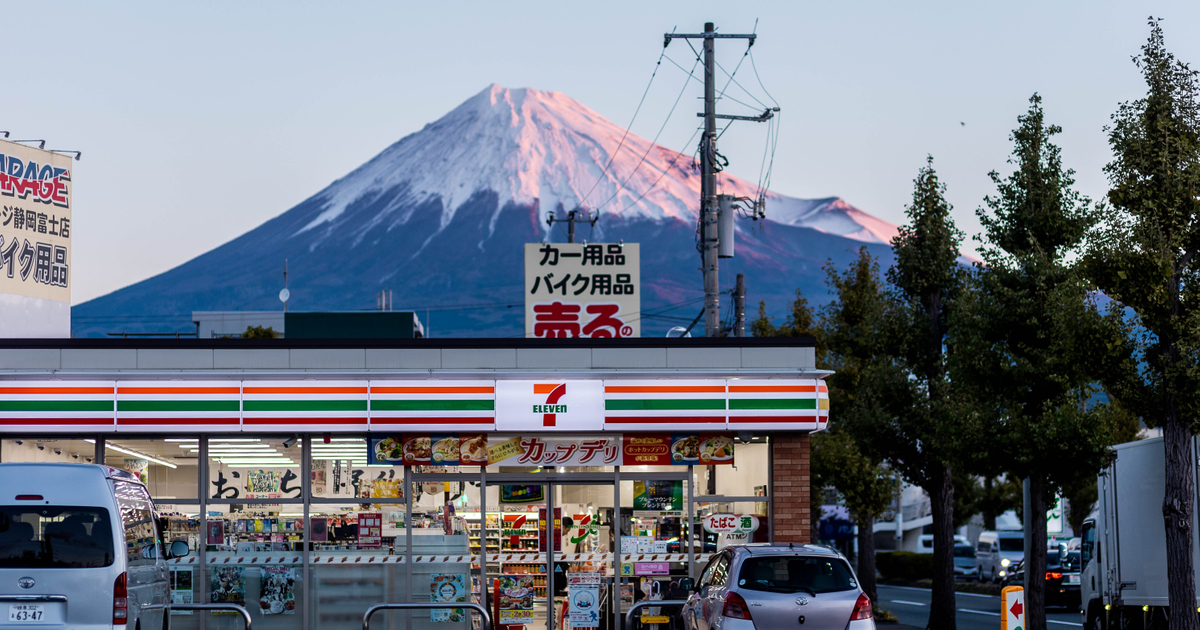18 Email Newsletter Examples We Love Getting in Our Inboxes
When you’re constantly inundated with social media, news, and emails, every day can seem like a case of information overload – trying to parse what’s important is a challenge. Subscribing to the right email newsletter can deliver the information...

When you’re constantly inundated with social media, news, and emails, every day can seem like a case of information overload – trying to parse what’s important is a challenge. Subscribing to the right email newsletter can deliver the information you need. Done well, an email newsletter with a purpose is like a trusted source helping you cut through the clutter. In this blog post, we provide tips and tricks for creating a newsletter that delivers value to subscribers and include examples of exemplary newsletters, explaining what makes them work. An email newsletter is a recurring email sent to subscribed contacts containing curated informational content from news articles to resources and tips. The goal is to provide ongoing value while surfacing important industry- or niche-related topics. The curation serves to up-level the journalistic quality of your content, which results in two things: When people first start doing email marketing, they often assume they need an email newsletter. However, newsletters are only effective when done well. "It'll have everything our customers care about, all in one place," they rationalize. "Our list will be different -- people will actually look forward to getting our newsletter," they argue. "Since we're only sending it once a month, it'll be a breeze to put together," they say. And while all of those things may become true for a few lucky individuals, lots of email newsletters flop. They become an uninteresting mush of content people automatically ignore, archive, delete, or straight up unsubscribe from. And this isn't great for you, your metrics, or your company's success. So if you're thinking about creating an email newsletter, keep on reading. In this post, we'll cover: Email newsletters can include a weekly round-up of blog posts, case studies regarding your product or service, upcoming company events and webinars, or even a behind-the-scenes look at your company. Of course, you don't want to create a newsletter just for the sake of creating one — instead, you should do thorough research on what your audience might prefer, and what your company is well-suited to offer. If you're looking for general email newsletter inspiration, you're in luck. Here's a list of some of our favorite ideas for email newsletters: Next, let's explore some newsletter designs to inspire the aesthetic of your newsletter. While you can get creative with the structure of your email newsletter, the general anatomy typically includes: There are a few best practices, however, you can employ to ensure your design is up-to-par regardless of your audience's preferences: Of course, the design of your newsletter will depend on your brand, as well as the message. For instance, you might want to create a colorful, attention-grabbing newsletter if it largely focuses on visuals of new products — alternatively, if it's a round-up of recent blog posts, perhaps you try a more minimalist look to mimic the appearance of a letter. Of course, you'll want to A/B test whichever design(s) you choose, to ensure they resonate with your audience. I'd also recommend looking into pre-made templates if you're not familiar with designing emails. If you're a HubSpot customer, you'll have a bunch of pre-made templates in the email tool. However, if you're still unsure about your newsletter design, there's nothing better than looking at examples for further inspiration. Take a look at the following newsletters that knocked it out of the park, and consider using some of their design elements as inspiration for your own. Each newsletter on this list is fabulous for different reasons. Some have exceptional design, some have exceptional copy, some have exceptional calls-to-action ... but all are exceptional at solving for their subscribers' needs. The Hustle is a daily newsletter that promises "business and tech in 5 minutes or less." While there are a ton of business and tech newsletters out there, what makes The Hustle remarkable is its tone at the intersection of informational and hilarious. Take two of their most notable headlines from 2021 as an example: The Hustle also allows subscribers to customize the content they receive to fit their interests (see the "Snippets" section in the example below). The formula of great content + unique tone + personalization works well for The Hustle's audience as they've grown to more than 1.5 million subscribers. Atlas Obscura’s newsletter does more than provide travel recommendations – it also delivers compelling stories about the world to your inbox. With stories like “Spotting Squid in the Tides of Oahu” and “Dreaming of Spaghetti and the Sea,” the Atlas Obscura newsletter is a portal for exploration. They do an excellent job of writing attention-grabbing headlines and finding unexpected, delightful details – library apartments, haunted coffee, and 19th century skulls are just a few examples. Combining interesting stories, captivating photos, and incredible destinations, the Atlas Obscura newsletter reels in the reader. See the Pen Newsletter - Arcana Obscura by HubSpot (@hubspot) on CodePen. Buffer does a great job at keeping the newsletter concise, making it easy for readers to get the knowledge they need with a skim. They understand that readers want to catch up on the fast-paced and ever-changing social media landscape, so they break down the latest news and trends. The newsletter is packed with information without feeling overwhelming due to its simple and organized structure. See the Pen Newsletter - Buffer by HubSpot (@hubspot) on CodePen. The news is overwhelming and trying to scroll through Twitter to catch up on what’s happening can lead to distractions. The Washington Post understands this and created “The 7” to break down the seven most important stories of the day. The newsletter is memorable because you can expect exactly seven stories to be sent to your inbox every weekday morning. The listicle format makes the newsletter skimmable. Under each story, they include bulleted points like “why this matters,” “why now,” and “the numbers” to get the point across succinctly. Complex news is made digestible. See the Pen Newsletter - WaPo by HubSpot (@hubspot) on CodePen. Phrasee’s weekly newsletter is as informative as it is delightful. They deliver curated articles accompanied by fun graphics, GIFs, and memes. Their tone is personable and lively, almost like the newsletter could fit in on social media. With their unique and daring tone, they know how to stand out from the crowd. A picture is worth a thousand words, says the adage. This couldn’t be truer for newsletters – if your content lends itself to imagery, use it to your advantage like The New York Times Cooking newsletter. The New York Times may be known for delivering news, but it also has a robust cooking section packed with creative, multicultural recipes that are beautifully photographed. Highlighting new recipes from different chefs, Their New York Times Cooking newsletter is never stale. They expertly include a variety of recipes so readers get value out of finding something new to try. See the Pen Newsletter - NYT Cooking by HubSpot (@hubspot) on CodePen. The Quartz Daily Brief provides a rundown of must-know news, Quartz’s most popular stories, and other interesting highlights about the economy. The newsletter is straightforward like a brief without being dry, with visuals like charts to help pique the reader’s interest. Sections for need-to-know news, what to watch for, top reads, and surprising discoveries keep things organized. The breadth of material means the reader can choose from a variety of topics to further investigate. See the Pen Newsletter - Quartz by HubSpot (@hubspot) on CodePen. Moz Top 10 is a semi-monthly roundup of top pieces of content about marketing. Essential to any marketer, Moz Top 10 links to key marketing content with actionable insights. The content is not just their own; they link to external sources. Examples of digital marketing and SEO content includes how brands can take stands on issues and backlink index comparisons. [Click here to see the entire email.] Vox Sentences is a nightly email meant to quickly get its readers up to speed on the best stories from the day. The content ranges from the day's top news to fun stories from all over the web. They do a great job balancing their own content with external sources, and the stories they choose are always really high quality. If you want to stay up on what's happening in the world and have some delightful writing delivered to your inbox first thing in the morning, look no further than TheSkimm. It's a daily roundup of what's happened in the news in short, punchy paragraphs. The best part? You don't have to click out of the email to read the news if you don't want to -- although they do link to their sources if you want to read further. For your own email marketing, TheSkimm is the place to go if you're looking for writing inspiration or for emails without much visual content. Below the Fold is a weekly newsletter (from Acciyo) that surfaces important and interesting stories that simply aren't making headlines due to the crowded, never-ending news cycle we all experience day in and day out. Acciyo's editorial team handpicks great news stories that they believe deserve "front-page love" but are being beaten out by an "infinite scroll of breaking headlines" — stories that range from how investors are profiting from emergency room bills, to how one Mexican company turned prickly pear into sustainable fuel. Remember Grantland, the sports and pop culture blog owned by ESPN that was started by sports journalist Bill Simmons? In October 2015, ESPN announced it would be ending the publication of Grantland. Shortly thereafter, Simmons formed Bill Simmon Media Group and recruited a whole bunch of former Grantland staffers to launch a brand new newsletter in March 2016 called The Ringer. Although The Ringer is written and run by many former Grantland employees it's a different project than Grantland was. Where Grantland focused on sports and pop culture, The Ringer branches out into other areas like tech and politics. Jon Favreau, a former speechwriter for President Barack Obama, is among the contributors. I like how focused they are on experimentation: "We want to have fun, take chances, analyze, theorize, obsess, and try not to take ourselves too seriously," said Editor-in-Chief Sean Fennessey. Another differentiator? The Ringer's website was developed in partnership with publishing platform Medium – which means the newsletter reflects that clean, minimal design. The Marginalian is one of the most interesting newsletters out there. In fact, the folks who write it call it an "interestingness digest." Every Sunday morning, subscribers get the past week's most unmissable articles about creativity, psychology, art, science, design, and philosophy -- topics that are really appealing to a wide audience. At its core, it explores what it means to live a good life. [Click here to see the full newsletter.] The New Yorker Recommends is a weekly newsletter highlighting what their staff reads, watches, and listens to. It is packed with curated recommendations for books, movies, TV shows, and music. Having staffers select their own recommendations gives this newsletter a personalized, hand-curated feeling that helps readers connect with the content. See the Pen Newsletter - The New Yorker Recommends by HubSpot (@hubspot) on CodePen. Polygon Patch Notes shares the staff’s picks for new movies, TV shows, video games, comics, manga, and tabletop RPGs. The newsletter also links to a free new game and highlights top stories on Polygon, ranging from reviews to guides. The mix of curated staff picks and top stories in a simple format makes this an easy-to-digest newsletter. Polygon Patch Notes also employs a personable tone, making the read relatable and fun rather than overly businesslike and bland. See the Pen Newsletter - Polygon by HubSpot (@hubspot) on CodePen. The mobile-first format for Apple News+ Audio capitalizes on people’s increasing reliance on smartphones – according to Pew Research Center, 85 percent of Americans have a smartphone. The format is also interesting – rather than solely delivering updates with text, subscribers can listen to audio. It makes sense, given that the newsletter highlights best Apple News+ Audio stories; including the icon with a link to listen makes it easy for subscribers to dive into a story. See the Pen Newsletter - Apple News+ Audio by HubSpot (@hubspot) on CodePen. Medium is a blog-publishing platform that has been continuously building momentum since its launch in 2012. Publishing on the site has really picked up in the past few years, and nowadays, there are a ton of people publishing posts on the site every day. Of course, that means there's a lot of content for the average person to filter through. To help bring great content to the surface, Medium uses email newsletters. And after I open this newsletter every day, I end up going to visit several Medium posts without fail. (Mission accomplished for Medium, right?) Here's why: The newsletter feels pretty minimal. Because of the way that Medium uses colors and section dividers, they're able to give you a ton of content in one email without it feeling overwhelming. Plus, they offer both a daily and a weekly version of the digest, allowing users to opt in for the email frequency they feel most comfortable with. From New York Magazine, The Strategist curates deals, shopping advice, and discounts. The newsletter does a great job of including relevant shopping information, paying attention to the trends. The Strategist also includes a wide variety of products and services to shop for, casting a wide net. See the Pen Newsletter - The Strategist by HubSpot (@hubspot) on CodePen. Even though newsletters are one of the most common types of emails to send, they are actually some of the hardest to do right. We hope these examples gave you some quality inspiration so you can create newsletters your subscribers love to get in their inboxes.Email Newsletter
Email Newsletter Ideas
Featured Guide: Email Newsletter Design Examples Lookbook
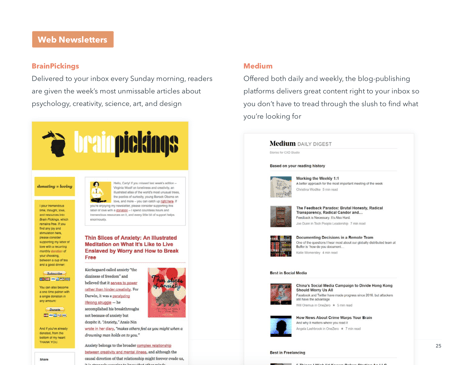 Learn how to build an email newsletter from scratch, and see dozens of email newsletter examples from real businesses with this free guide.
Learn how to build an email newsletter from scratch, and see dozens of email newsletter examples from real businesses with this free guide.Email Newsletter Design
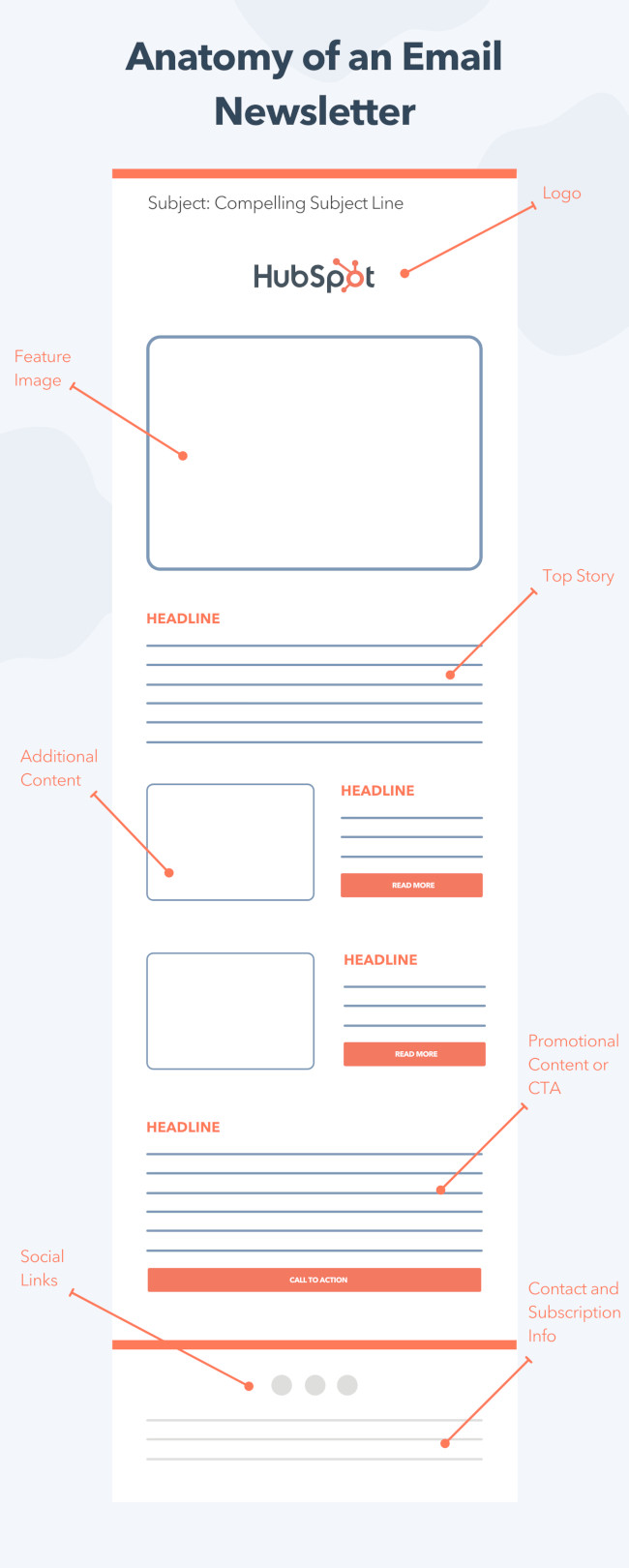 From a design standpoint, your company's newsletter should be a true reflection of your brand. For instance, if your website features minimalist design and clean, plain black-and-white text, then you don't want to create a super colorful newsletter, which might confuse new subscribers.
From a design standpoint, your company's newsletter should be a true reflection of your brand. For instance, if your website features minimalist design and clean, plain black-and-white text, then you don't want to create a super colorful newsletter, which might confuse new subscribers.Email Newsletter Examples
1. The Hustle
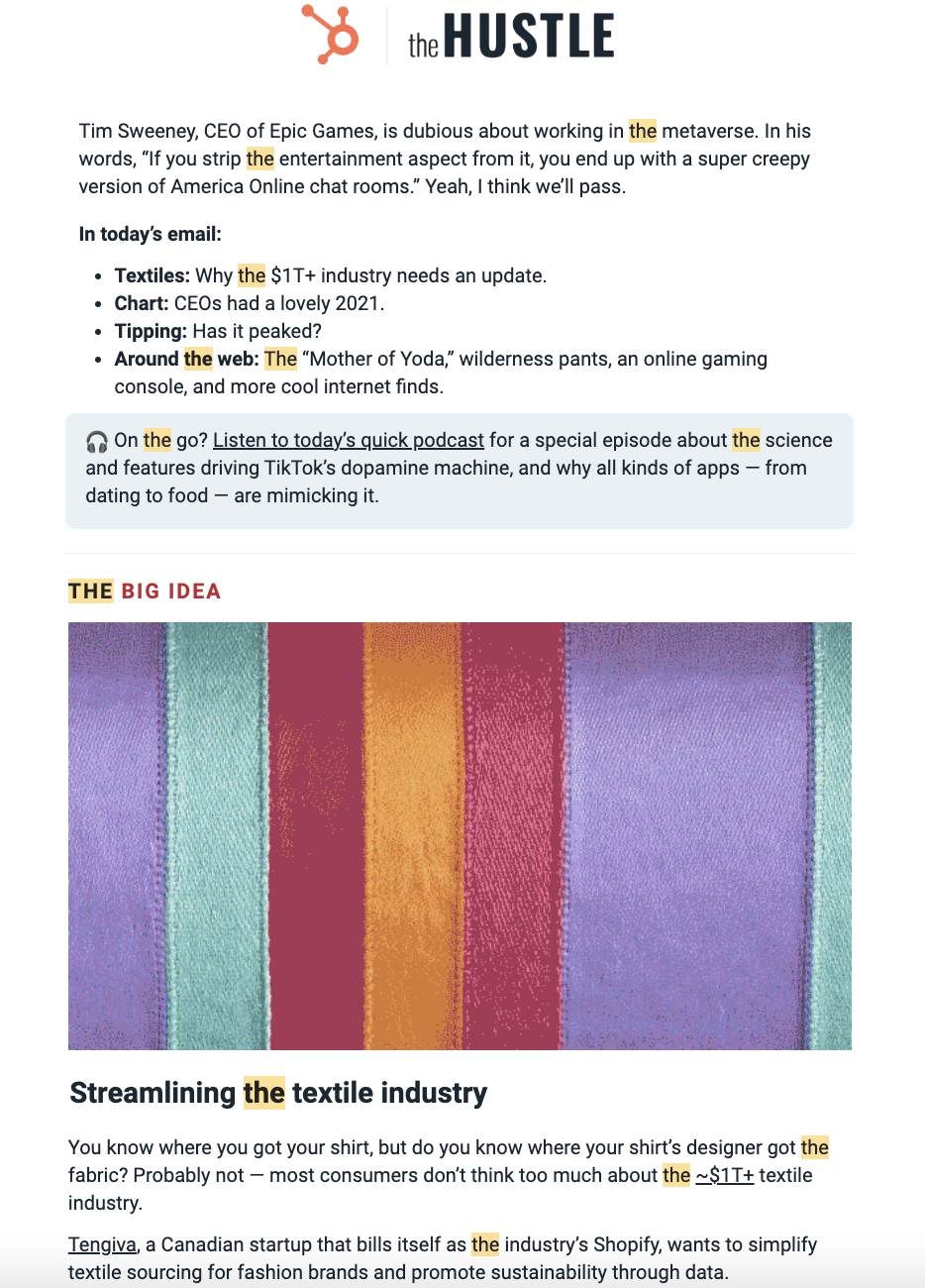 Image Source: The Hustle
Image Source: The Hustle2. Atlas Obscura
3. Buffer
4. The Washington Post The 7
5. Phrasee
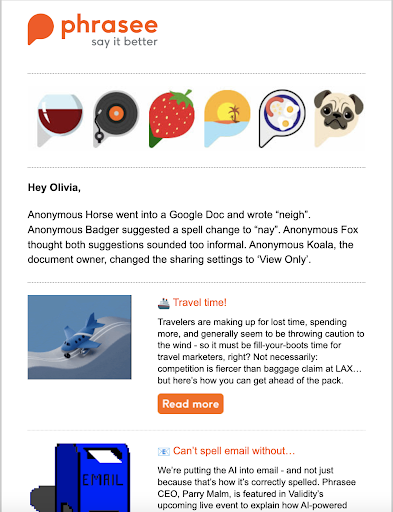 Image Source: Phrasee
Image Source: Phrasee6. The New York Times Cooking
7. Quartz Daily Brief
8. Moz Top 10
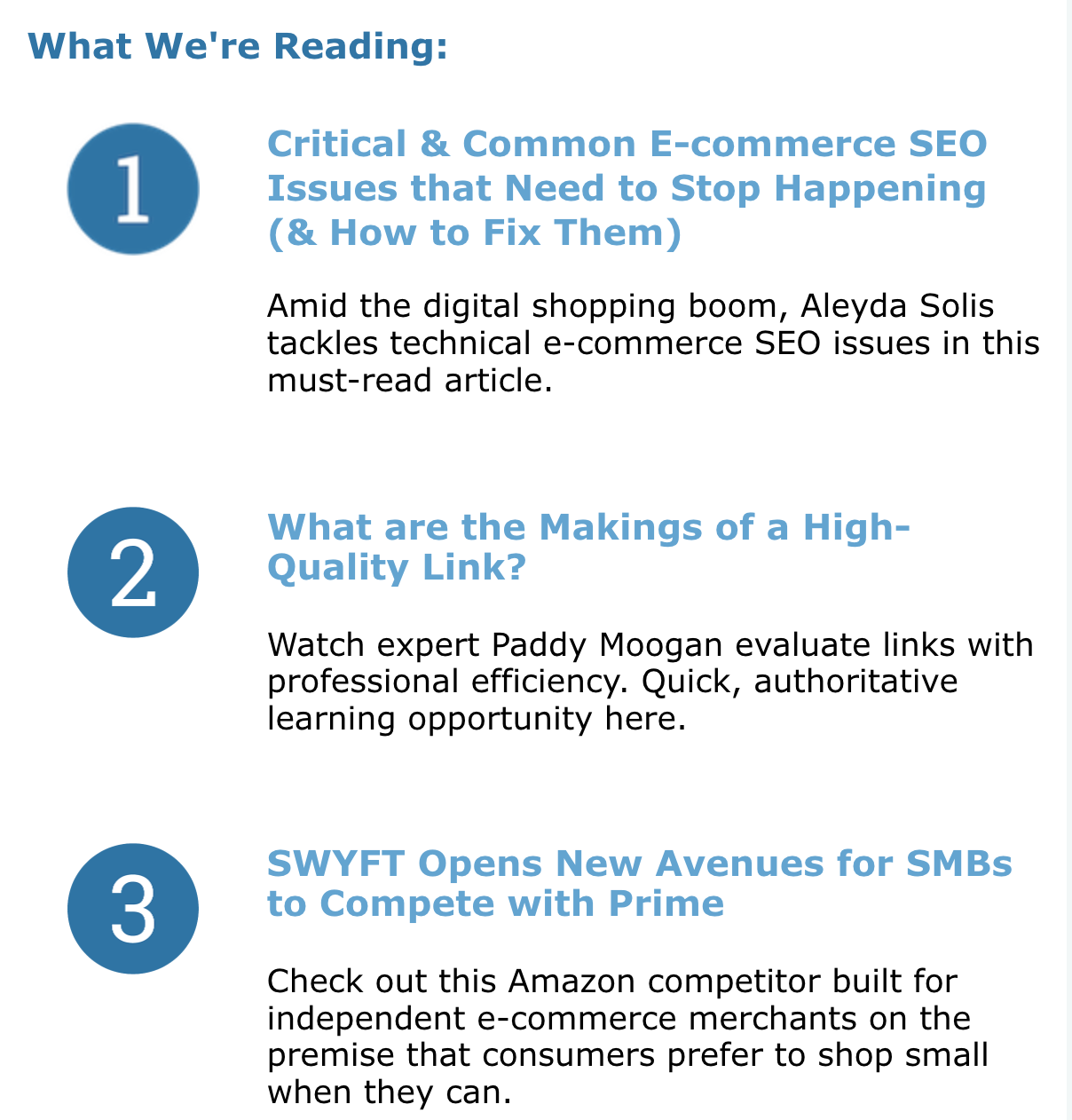
9. Vox Sentences
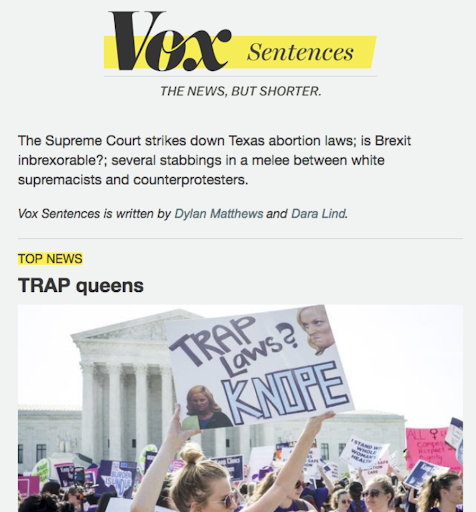 Image Source: Vox
Image Source: Vox10. TheSkimm
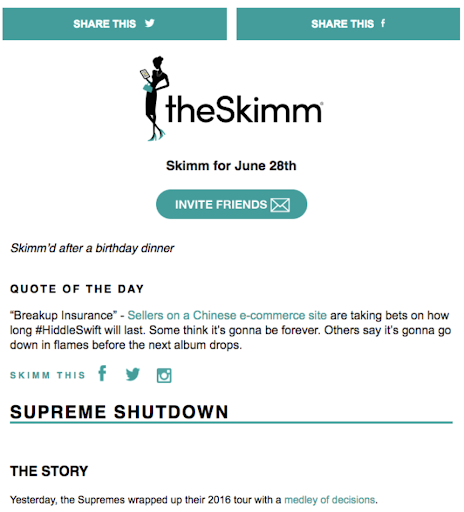 Image Source: TheSkimm
Image Source: TheSkimm11. Below the Fold
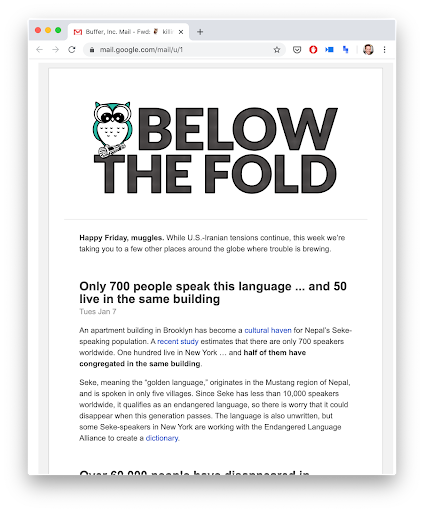 Image Source: Below the Fold
Image Source: Below the Fold12. The Ringer
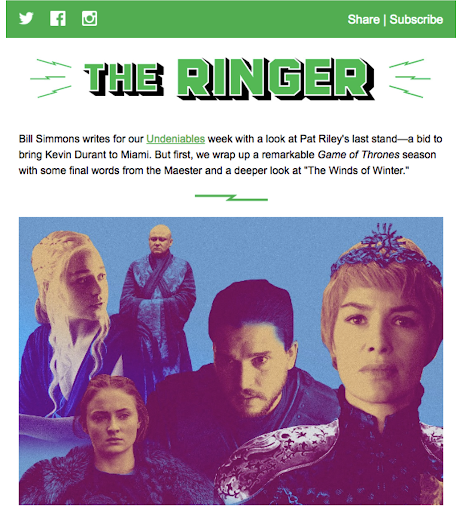 Image Source: The Ringer
Image Source: The Ringer13. The Marginalian
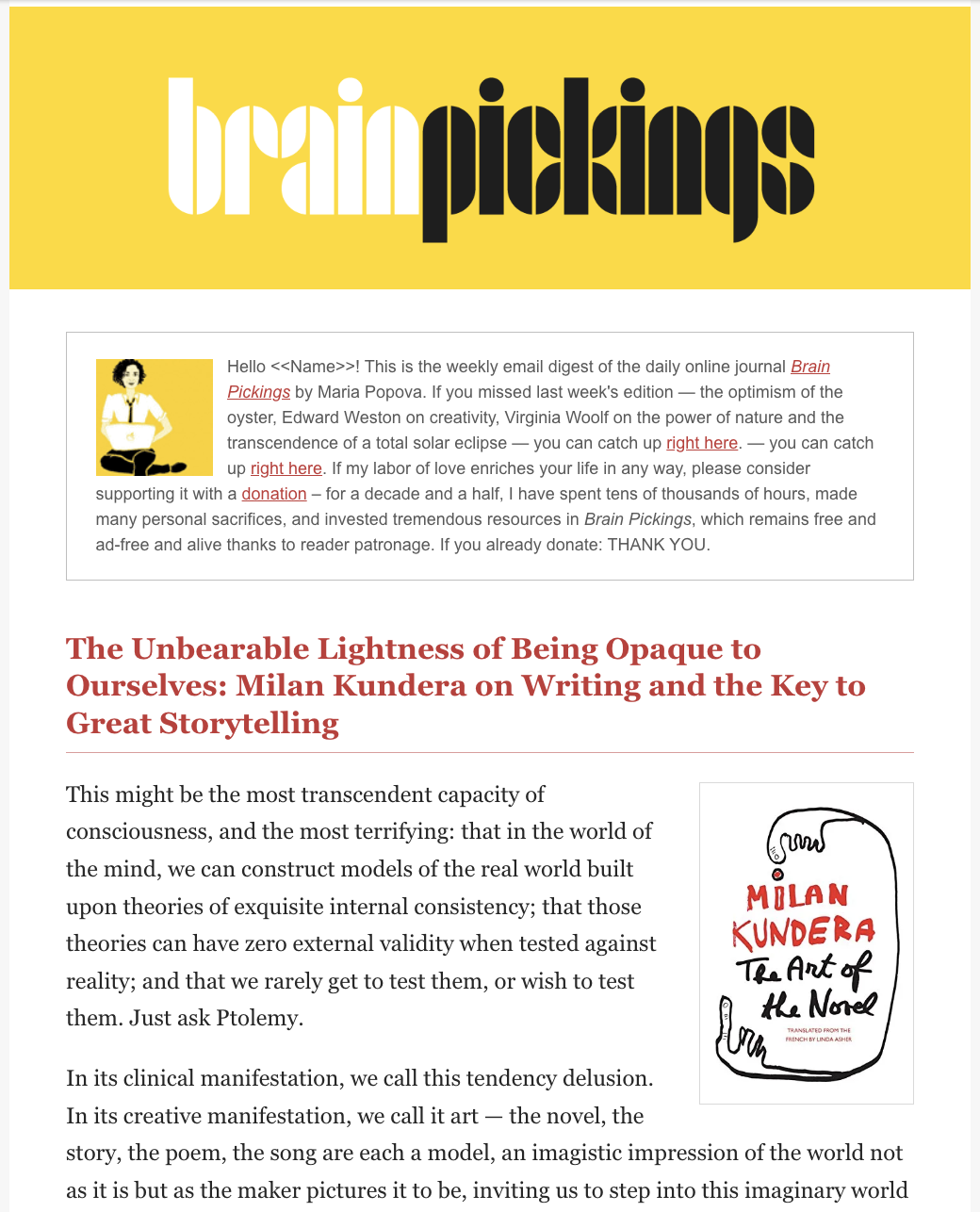
14. The New Yorker Recommends
15. Polygon Patch Notes
16. Apple News+ Audio
17. Medium
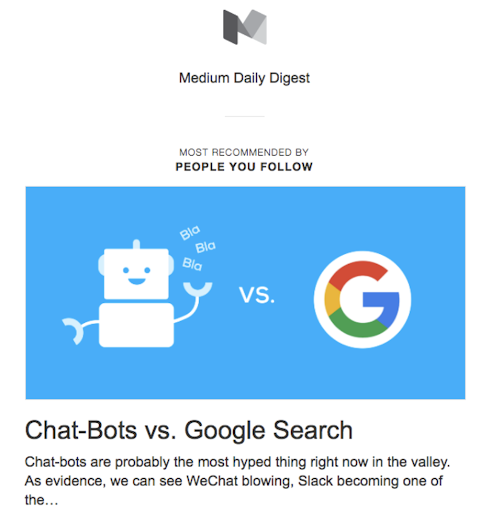 Image Source: Medium
Image Source: Medium18. The Strategist
Creating an Email Newsletter Your Subscribers Love
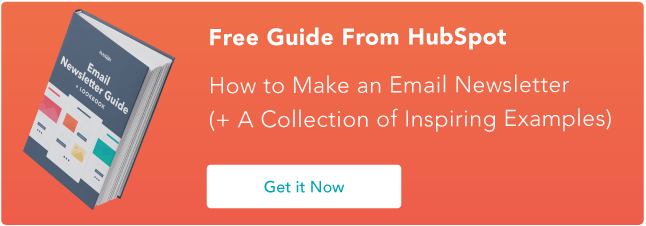
Originally published Jul 7, 2022 7:00:00 AM, updated July 07 2022

 ShanonG
ShanonG 








![What is Clubhouse? [+Should Marketers Care?]](https://blog.hubspot.com/hubfs/what-is-clubhouse.jpg#keepProtocol)
